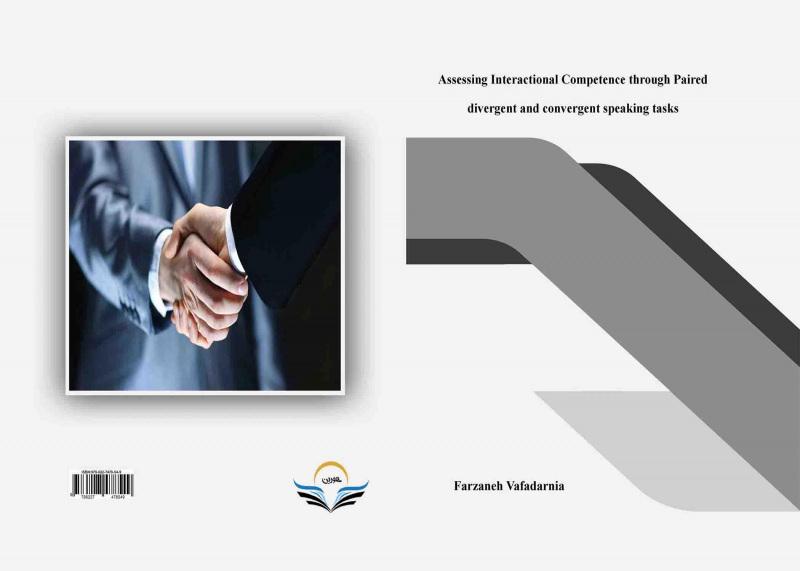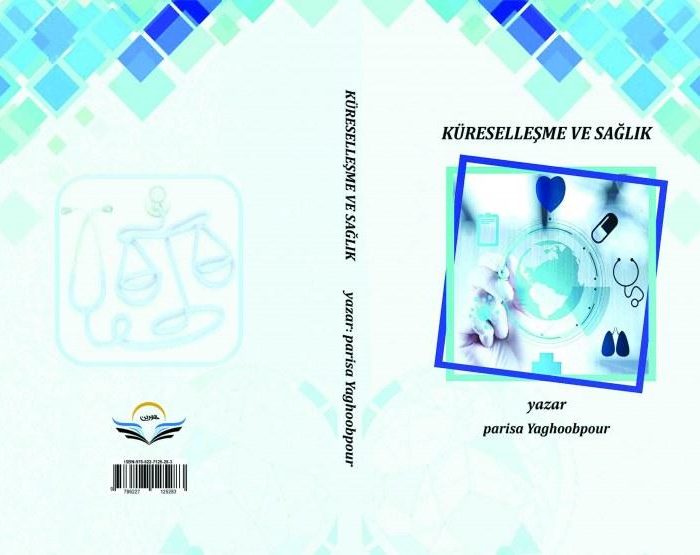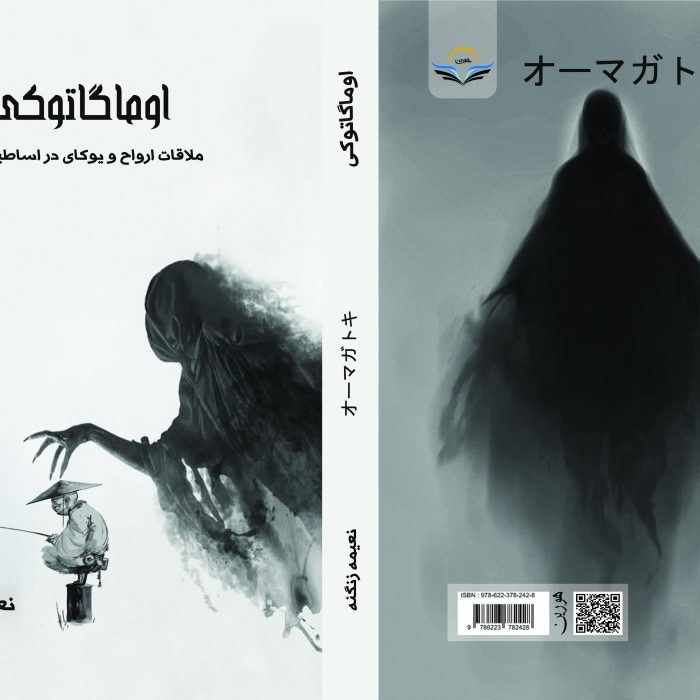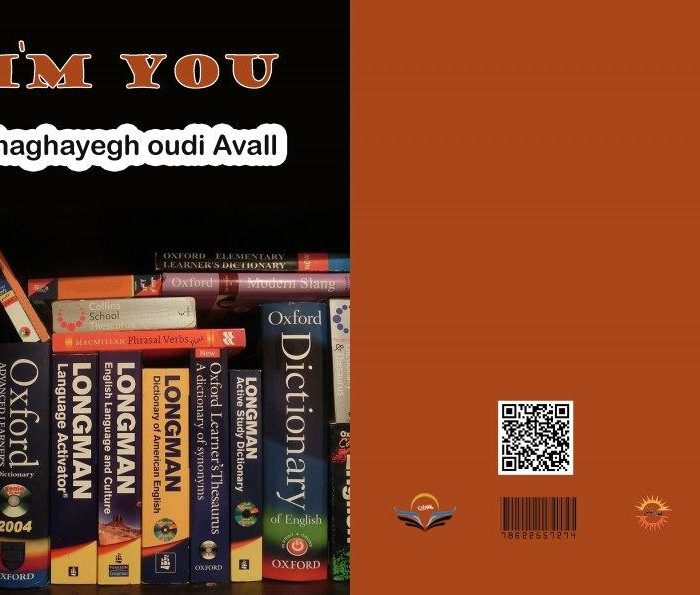کتاب Assessing Interactional Competence through Paired divergent and convergent speaking tasks
- صفحه نخست
- رشته ها
- - ادبیات و زبان های خارجی
- کتاب Assessing Interactional Competence through Paired divergent and convergent speaking tasks
کتاب Assessing Interactional Competence through Paired divergent and convergent speaking tasks
182,000 تومان
| تعداد صفحات | 130 |
|---|---|
| شابک | 978-622-378-057-8 |
LIST
Title page
Acknowledgements 6
Chapter 1 13
INTRODUCTION 13
1.1 Preliminaries 13
1.2 Statement of the problem 15
1.3 Significance of the study 16
1.4 Objectives of the study 17
1.5 Research questions 18
1.6 Definition of key terms 18
Chapter 2 20
Literature Review 20
2.1 Overview 20
2.2 Communicative competence 22
2.2.1 Hymes (1972a) 23
2.2.2 Canale and Swain (1980) 24
2.2.3 Bachman (1990) 25
2.2.4 Bachman and Palmer (1996) 26
2.3 Interactional competence 29
2.3.1 Discursive practices 30
2.3.2 Resources of discursive practices 31
2.3.3 Context of discursive practices 31
2.3.4 Intersubjectivity in discursive practices 32
2.4 Interactional competence in paired and group speaking tests 34
2.4.1 Matuality & equality 36
2.4.2 Interaction features 38
2.4.3 Conversation analyses 42
2.4.4 Discourse analyses 43
2.4.5 Rater perceptions 46
2.5 Task and interlocutor impacts in paired and group speaking tests 51
2.5.1 Task effects 54
2.5.2 Effects of proficiency and language ability 56
2.5.3 The interlocutor effect revisited: Language ability identities 60
2.6 Insights into interactional competence from theoretical and empirical research 63
2.6.1 The debate over authenticity 64
2.6.2 The debate over variability 68
2.7 Chapter summary 72
Chapter 3 75
Method 75
3.1 Overview 75
3.2 Participants 75
3.3 Procedure 76
3.3.1 Theoretical model of interactional competence 78
3.4 Materials 81
3.5 Data analysis 82
Chapter 4 83
Data Analysis and Results 83
4.1 Overview 83
4.2 Discussing spoken interaction model 83
4.3 Investigating the first research question 84
4.4 Investigating the second research question 92
4.5 Investigating the third research question 98
Chapter 5 101
Discussions, Conclusions, and Implications 101
5.1 Overview 101
5.2 Restatement of the problem 101
5.3 Major findings 102
5.3.1 Features of the free discussion task 102
5.3.2 Features of the story completion task 105
5.3.3 The Task type effects on interaction performance 108
5.4 Conclusion 110
5.5 Implications of the study 112
5.6 Limitations of the study 113
5.7 Suggestions for future research 113
Refernces 115
Language proficiency was first understood as the knowledge of structure (grammatical, lexical, and phonological) that, it was believed, the best be measured by discrete-point tests (Lado, 1961). With the rise of communicative language teaching in the 1970s, performance testing received significance. In 1980s, the language proficiency interview (e.g. the ACTFL oral proficiency interview, or OPI), that was a specific type of performance test, became common. However, there was a large impact of asymmetry of power in examinee-examiner interviews (Taylor, 2001). At last, paired speaking tasks were considered a successful format for eliciting a range of linguistic and paralinguistic features (Brooks, 2009; Davis, 2009; Dimitrova-Galaczi, 2004; Nacatsuhara, 2004; Ducasse & Brown, 2009; May, 2011b).
As the communicative turn in language teaching led to an increase in pair and group work activities in L2 classrooms, pair and group work also became more common in communicative-based assessments (van Moere, 2012). In paired test tasks, the test taker is matched with one peer-interlocutor, and the pair is given tasks to obtain an interaction that is constructed by the two participants. During the test, an examiner is present and usually guides the test but is not engaged in the candidates’ interaction. The examiner’s role is to observe and evaluate the performance.
The currency of the paired test format can be partially found as a reaction to the criticism that has been leveled against the asymmetric nature of traditional interview-style oral tests (e.g. the face to face OPI (Oral Proficiency Interview); the tape mediated Simulated Oral Proficiency Interview, or SOPI), which have been widely practiced for oral proficiency testing. Particularly, the OPI of the American Council on the Teaching of Foreign Languages (ACTFL) has been the subject of argument as to whether or not it determines speaking competence in a conversation, meaning face to face relationship in a real life context. In a now classic paper, van Lier (1989) compared features of the OPI speech with those of a natural conversation. He discovered significant differences between the two interactions, which increased concerns related to validity of the OPI.
With his influential work, van Lier (1989) drew attention to the empirical analysis of the features of discourse in face to face oral evaluation. He called for further research that would look at the turn-by-turn ordinal interaction in oral language proficiency interviews and the way participants make the oral test discourse. Following van Lier’s (1989) call, several studies occurred in the 1990s regarding language proficiency interviews in general and the OPI in particular from a range of discourse analytic perspectives (e.g. Brown, 2003, 2005; Johnson, 2000, 2001; Lazaraton, 2002).
Data from these studies demonstrated the occurrence of an asymmetrical power relationship between examiner and examinee in face to face oral interviews that puts the interviewer in control over turn-taking and topic initiation. In comparison, discourse data from paired speaking tests revealed that the language features elicited tend to be equally distributed between the candidates (Brooks, 2009; Taylor, 2001). Moreover, the turns produced in the paired format are longer and more balanced across the interlocutors (Csepes, 2009). Thus, the paired test format take out predominantly everyday-like balanced interactions between language users, where one speaker does not dominate the other.
In addition, selecting a peer format for a speaking test should have a positive washback effect from teaching to testing and vice versa, since pair-work activities are commonly used in communicative language teaching (Egyud & Glover, 2001; Fulcher, 2003; van Moere, 2012). Students also seem to prefer the peer type to individual speaking tasks with an examiner, as student answers to questionnaires show (Egyud & Glover, 2001; May, 2000). Van Moere (2012) also emphasizes that paired tests are less time consuming and less expensive compared to examiner-candidate oral interview tests, as two individuals can be evaluated at the same time. Moreover, since examiners do not have to be as interlocutors in a paired test context, they can entirely concentrate on their function as evaluators (van Moere, 2012).
1.2 Statement of the problem
The co-construction between two or more interlocutors is interactional competence (Hall & Pekarek, 2011) yet it is not clear what the co-construction includes (Gan, 2010; Brooks, 2009). The construct of interactional competence needs searching evidence both at macro and micro levels. At a macro-level, there are different patterns of co-construction occurring in paired speaking tasks. At a micro-level, the co-construction is described through a series of interaction features. However, it is not clear what factors determine or predict interaction performance. Possible factors contain interaction features or interaction patterns in general. To move beyond description, it is also necessary to investigate whether interaction features predict interaction performance (Wang, 2015).
Although, several concerns have been raised when conducting paired speaking tasks in L2 assessment. First, L2 oral interaction in language tests is considered complex (Chalhoub-Deville, 2003; May, 2010; Taylor & Wigglesworth, 2009). One chief reason is the complicated nature of the construct itself. Interactional competence points to the co-construction between two or more interlocutors (e.g. Hall & Pekarek, 2011; He & Young, 1998; Jacoby & Ochs, 1995; Kramsch, 1986). Lastly, appropriate rating scales are required to measure interaction performance (Wang, 2015).
There are some aspects like individuals’ features and task styles which add to the complexity of paired speaking tasks in L2 assessment. Studies on interlocutors’ differences such as familiarity, gender, personality and proficiency variability have shown the great complexity and possible variability of paired oral tasks (Berry, 2007; Brown & McNamara, 2004; O’Sullivan, 2000, 2002). Therefore, it is compulsory to investigate the possible task type influence on interaction performance and whether task styles influence the classification of interaction features. In summary, this study aimed to search the complex nature of peer-peer interaction by addressing each of these issues in the context of paired speaking assessment.
1.3 Significance of the study
Studies on task-based assessment might add to the theoretical, methodological, and practical perspectives in the field of L2 speaking, teaching and testing. Having understood that there is a social dimension to proficiency and face to face interaction (MacNamara & Roever, 2006), language testers have started to absorb an interactional competence perspective into language testing. Operationalization studies have described the construct of interactional competence in paired speaking tests chiefly in terms of balanced and collaborative turn-taking behavior and topic management between test takers (Ducasse & Brown, 2009; Galaczi, 2008; May, 2009, 2011).
In comparison to oral interviews, variability in paired and group oral testing has not received much attention thus far. Only a few studies have examined the impact of test takers’ proficiency levels (Csepes, 2009; Davis, 2009; Iwashita, 1996) and test task characteristics (Nakatsuhara, 2013; van Moere, 2007) on test discourse and ratings in group speaking tests. Even though the test task is known to cause variation in the speaking ability being tested, research in paired testing so far has primarily contained only one paired task; namely a discussion task (Ducasse & Brown, 2009; Galaczi, 2004, 2008; May, 2011). Also referred to as the “defult task” (p. 117) by van Moere (2007) in his research on group speaking tests, the discussion tasks is believed to naturally elicit conversation-like discourse in paired testing contexts. The impact of other paired tasks may have on test performance in paired assessment has been largely neglected.
Another issue in paired testing concerns the appropriate matching of peer-interlocutors. Swain (2001) made this point clear when she stated that “who one is paired or grouped with, is not unimportant” (p. 296). Foot (1999) argued on the same thing when he claimed that a candidate’s speaking ability seems to be highly sensitive to the interlocutor with whom he or she is paired. In a similar vein, Norton (2005) suggested that the acquaintance level of the test takers may have an effect on paired test discourse and scores; she therefore calls for research that examines the performance of paired test takers who are friends and who are strangers.
1.4 Objectives of the study
1. Finding the interactional features of free discussion and story completion paired tasks of advanced Iranian EFL learners
2. The degree to which task types interact with levels and features of interaction quality
3. Measuring micro-level interactional competence to elicit which task type causes more interaction between paired interlocutors.
1.5 Research questions
1. What are the interactional features of free discussion paired tasks of advanced Iranian EFL learners?
2. What are the interactional features of story-completion paired tasks of advanced Iranian EFL learners?
3. Which task type (free discussion or story-completion) causes more interaction among advanced Iranian EFL learners?
1.6 Definition of key terms
• L2 speaking proficiency. It refers to skills and strategies that students use in relation to second language speaking (Brown, 2004).
• Interactional Competence. It means someone’s ability to use a range of characteristics in roles of the listener and speaker to remake communication with other interlocutors to reach communicative goals (Hall, 1995; He & Young, 1998).
• Task. It is a performance-based activity with a communicative goal to achieve proper language performance from interlocutors (Bachman, 2002; Brown, Hudson, & Bonk, 2002).
• Paired speaking task. This task requires peer-peer interaction through the perspectives of second language acquisition and task-based language assessment (Ducasse & Brown, 2009; May, 2010; Taylor & Wigglesworth, 2009). In paired speaking tasks, there are two interlocutors who speak together and learn to work in cooperation, thus there is variety in classroom routines and activities, an opportunity for students to practice social skills, in which students are “center stage” rather than the teacher and on-task behavior (Curtain & Dahlberg, 2010, p. 98).
• Free discussion task. It is a kind of open and divergent task in which there is not any predetermined correct outcomes. A divergent task allows different views from participants (Ellis, 2003). In a free discussion task, there is a topic that interlocutors should talk about it.
• Story completion task: It is a kind of closed and convergent task in which participants must reach a “single, correct solution or one of a small finite set of solutions” (Ellis, 2003, p.89). A convergent task expects participants to agree on a solution before ending their interaction. In a story completion task, there are some pictures for participants to put them in order to make a correct story.
| تعداد صفحات | 130 |
|---|---|
| شابک | 978-622-378-057-8 |
.فقط مشتریانی که این محصول را خریداری کرده اند و وارد سیستم شده اند میتوانند برای این محصول دیدگاه(نظر) ارسال کنند.







نقد و بررسیها
هنوز بررسیای ثبت نشده است.